Vintage cameras are enjoying a new lease of life as fashion accessories. It’s the very antithesis is Mr Kravitz and his snake-skin edition and, dare I say, all the better for it.
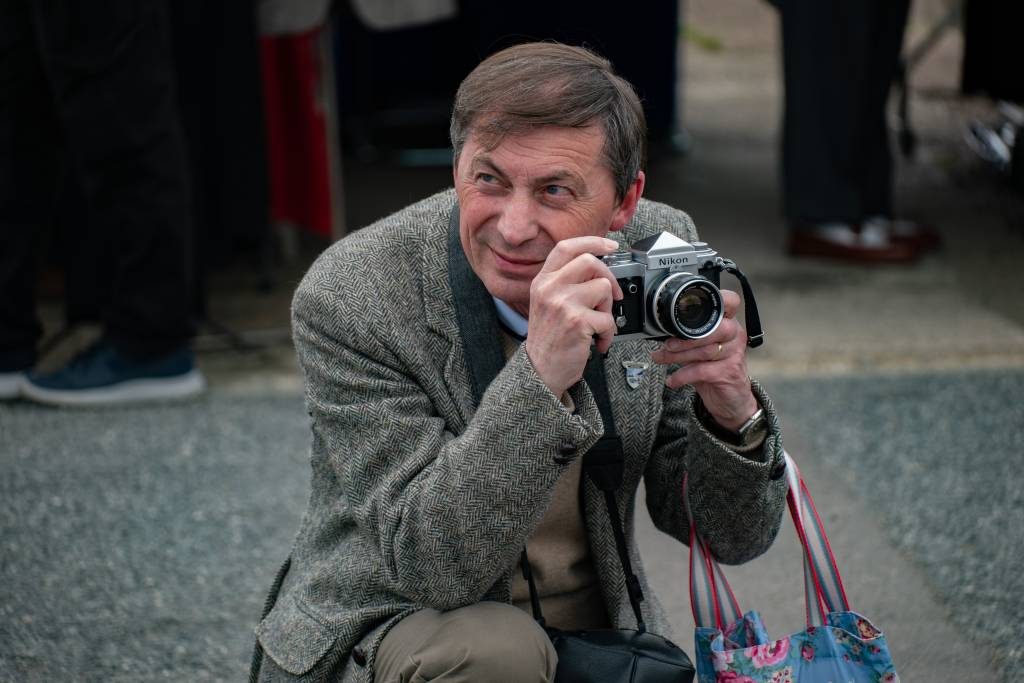
A few days ago I spent a couple of hours at the Vintage Festival at Brooklands Museum, just outside London. I’ve been to a number of these events over the years and recently I’ve noticed a marked increase in cameras being used as part of the period accoutrements. Last year shopping baskets covered in a gingham cloth were all the rage. This year it’s vintage cameras. These dressing-up meetings present a good opportunity to dangle an old camera, not always quite in period, it must be said. But I give them all ten points for effort.
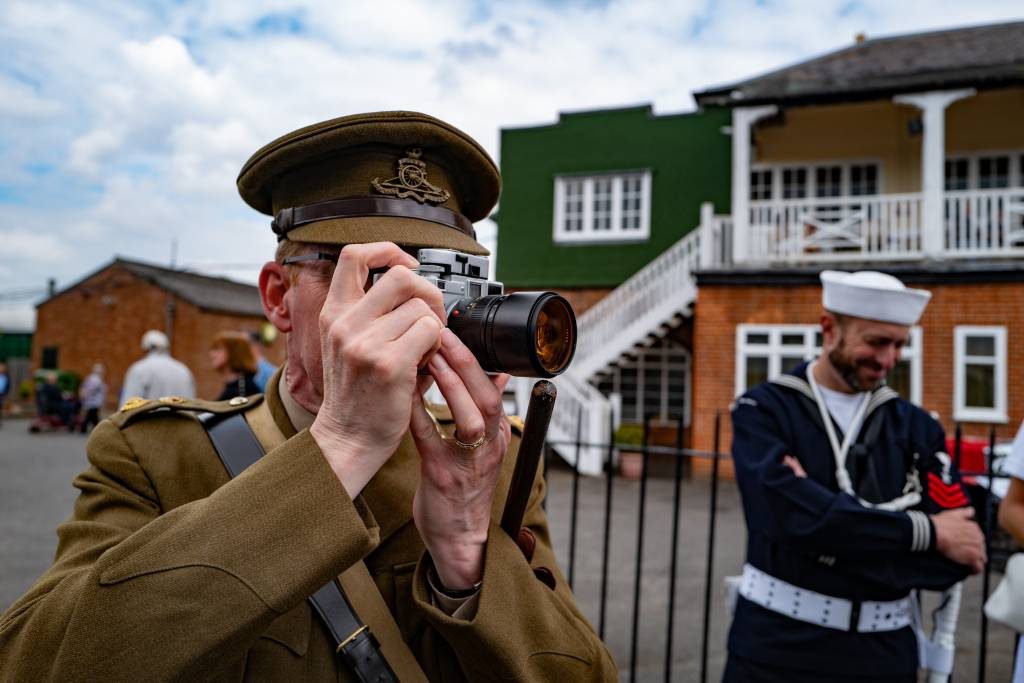
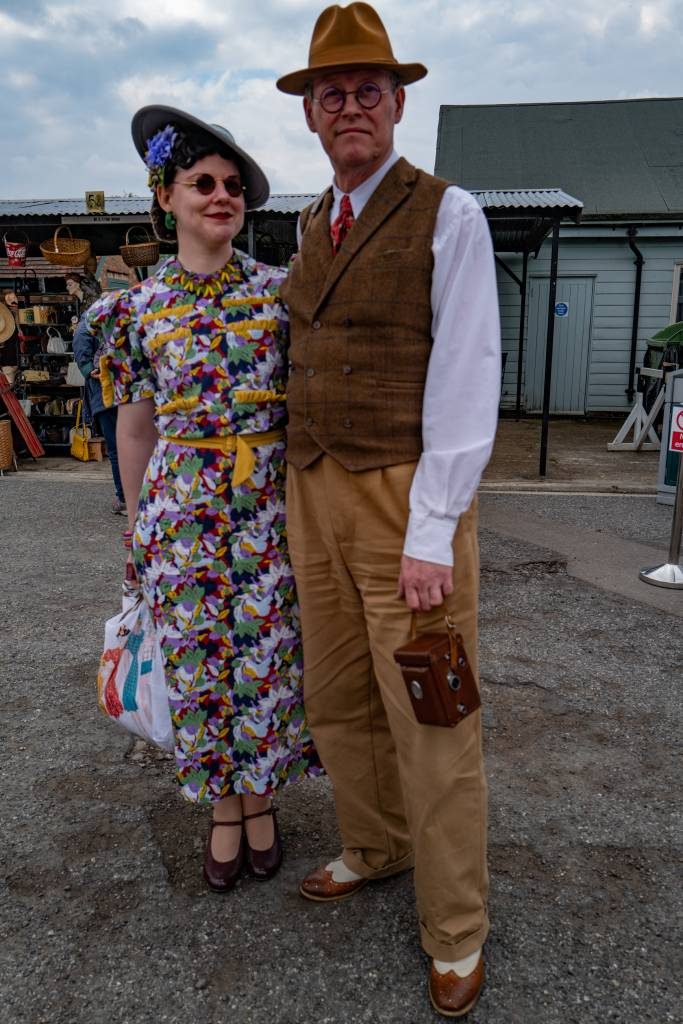
I was a bit more up to date, although I am tempted to get out the old trilby and Oxford bags (and perhaps a pair of Mr. Kravitz’s snakeskin shoes) to feel more part of the scene. It did occur to me on Sunday that I should have put a roll in my M3 or IIIa. The cameras would have been more in keeping and I could have got some more atmospheric shots.
I didn’t. Instead I had the Q2 round my neck and the CL with the “kit” 18-56mm Vario-Elmar in the bag. Not much vintage about them.
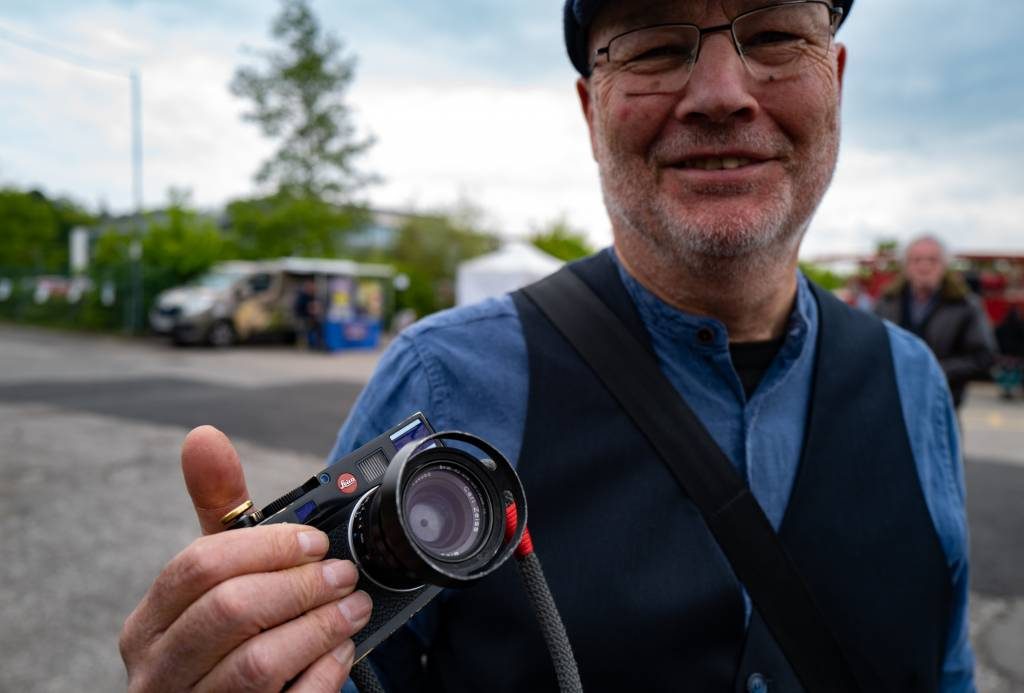
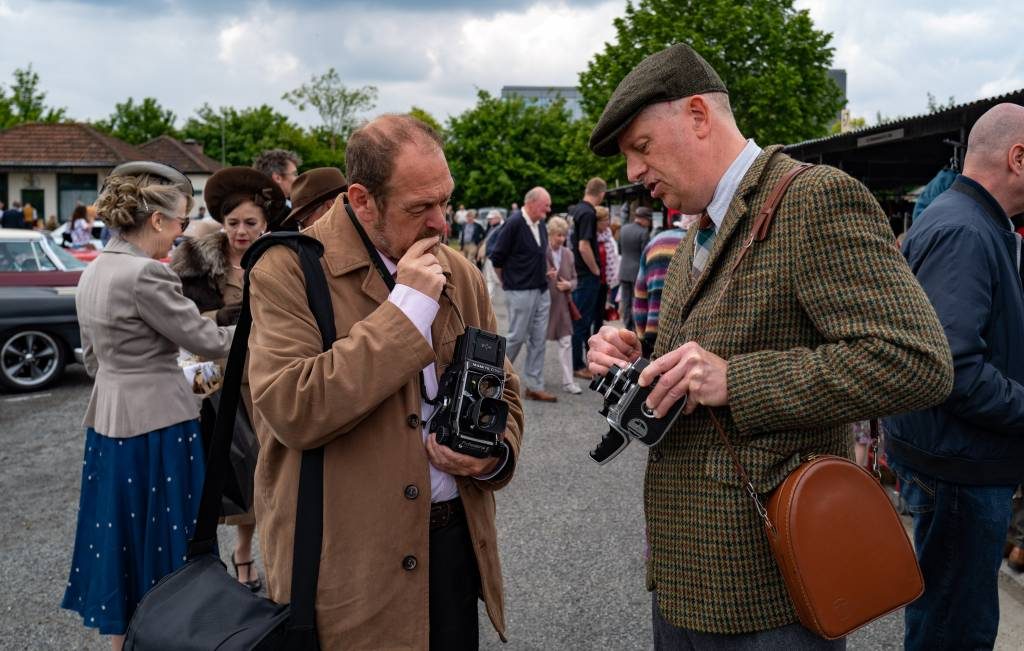
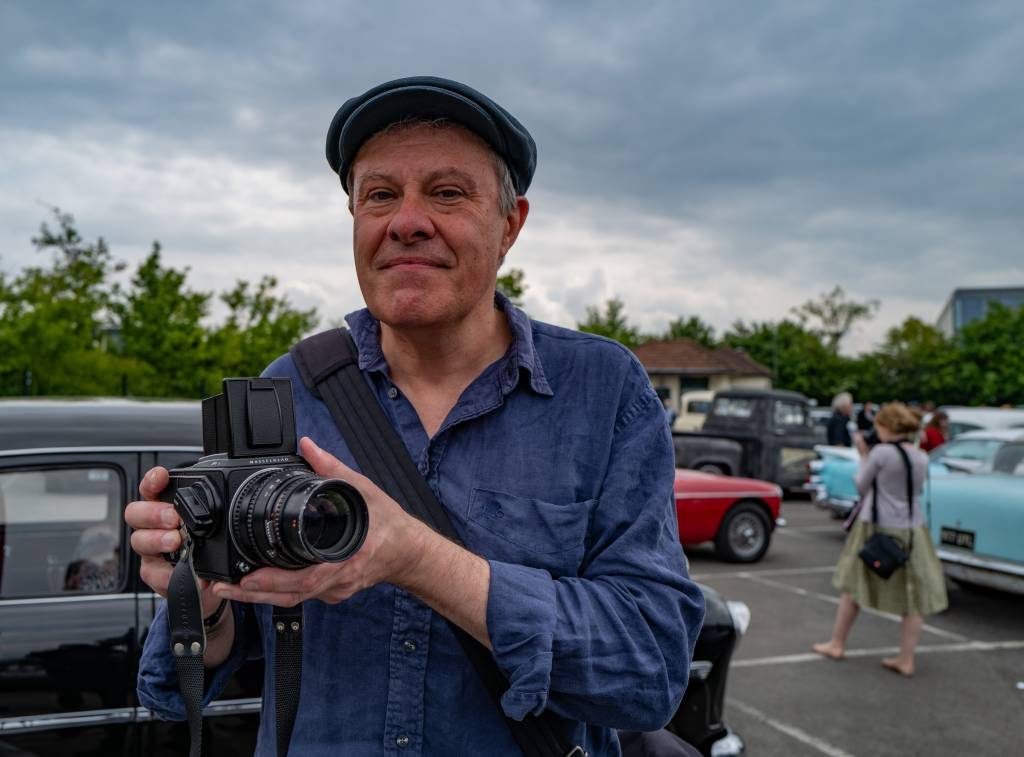
One of the highlight cameras wasn’t a real vintage device at all, although it looked the part. Graham Thomas had made his own faux plate camera which he was wearing around his neck like any old DSLR. It works, too, but with a touch of modern technology. Up front was a Sony QX10 camera and at the back, where the plate would have fitted, was a tablet computer to record the images.
Graham believes in home-made confections. He’d travelled to Brooklands in a 1930s customised Austin Seven which he’d built from scratch.
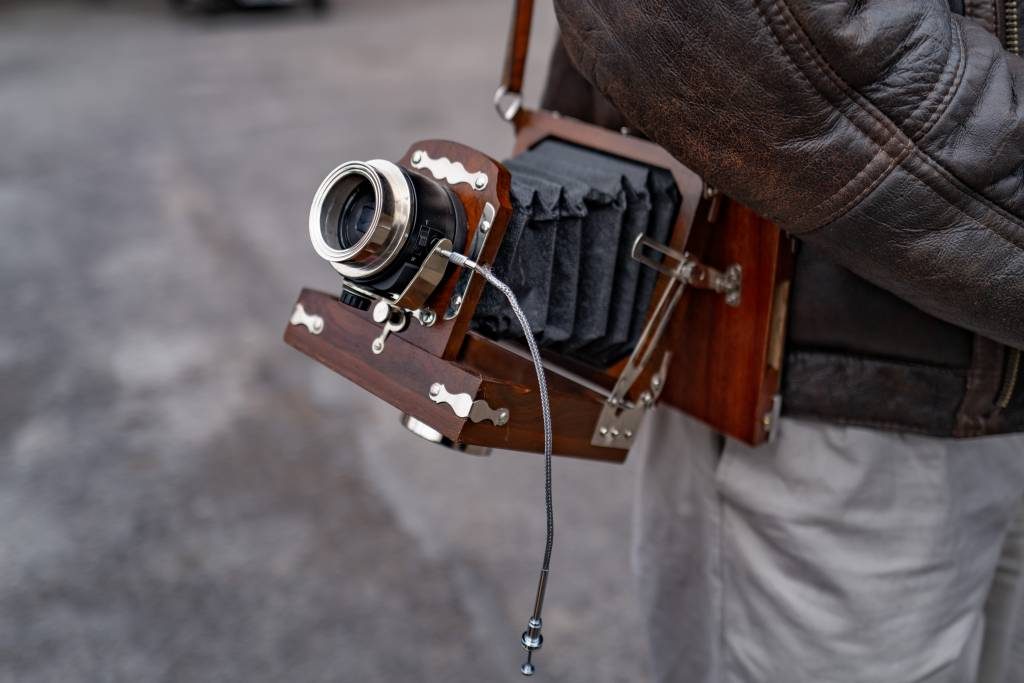
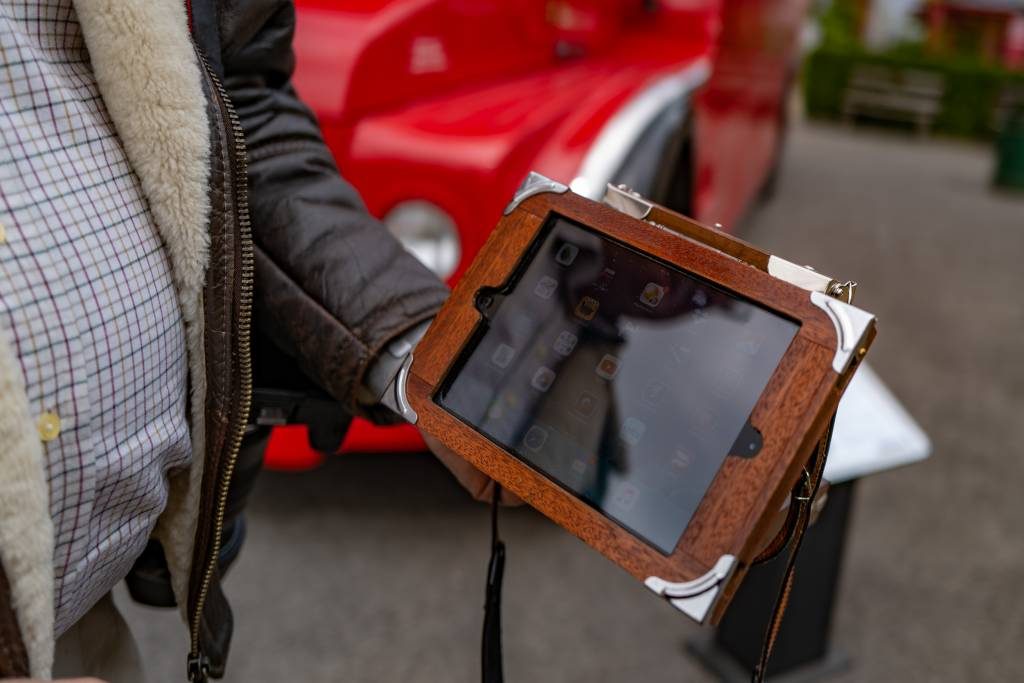
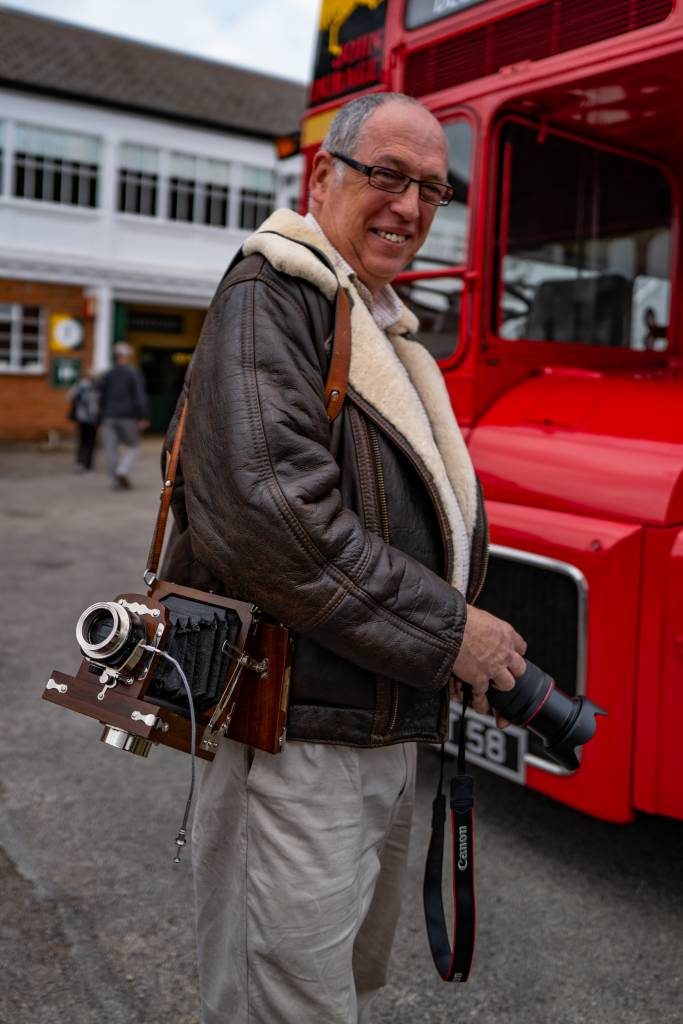
Graham Thomas with his home-made digital plate camera based on a Sony QX10. All the machine parts made on his own lathe
Among the other real photographers I met were Simon Burgess with his Hasselblad and John Frye with a well-worn M9 and Zeiss Biogon. There was also a gorgeous Nikon F2 and a whole collection of TLRs — those telephone-kiosk brown leather cases really look the part.
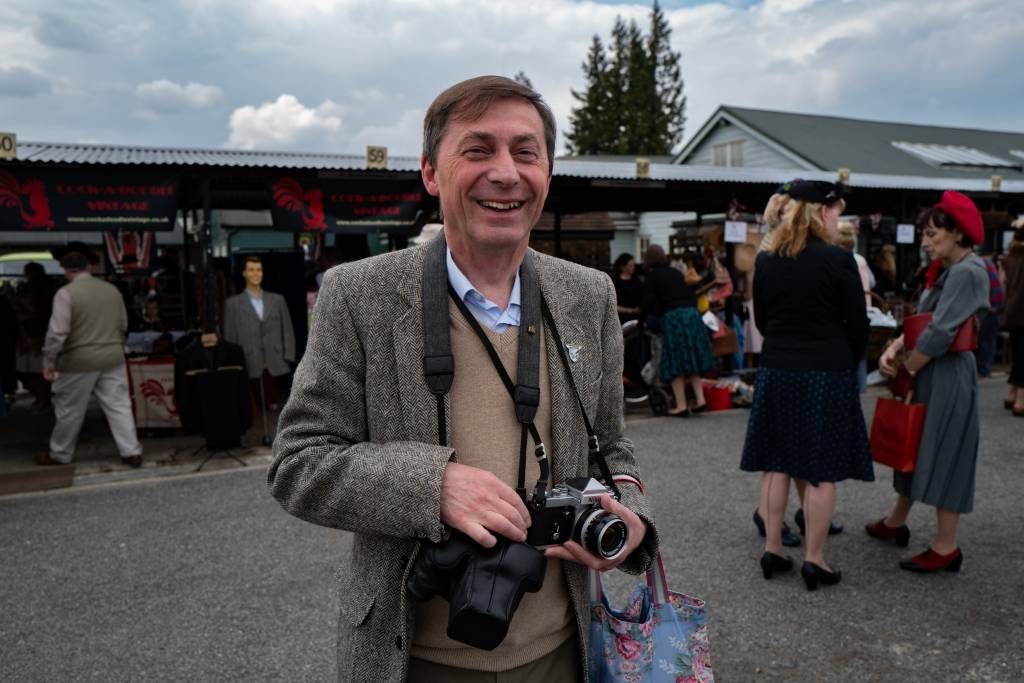
Now I’ve kindled my
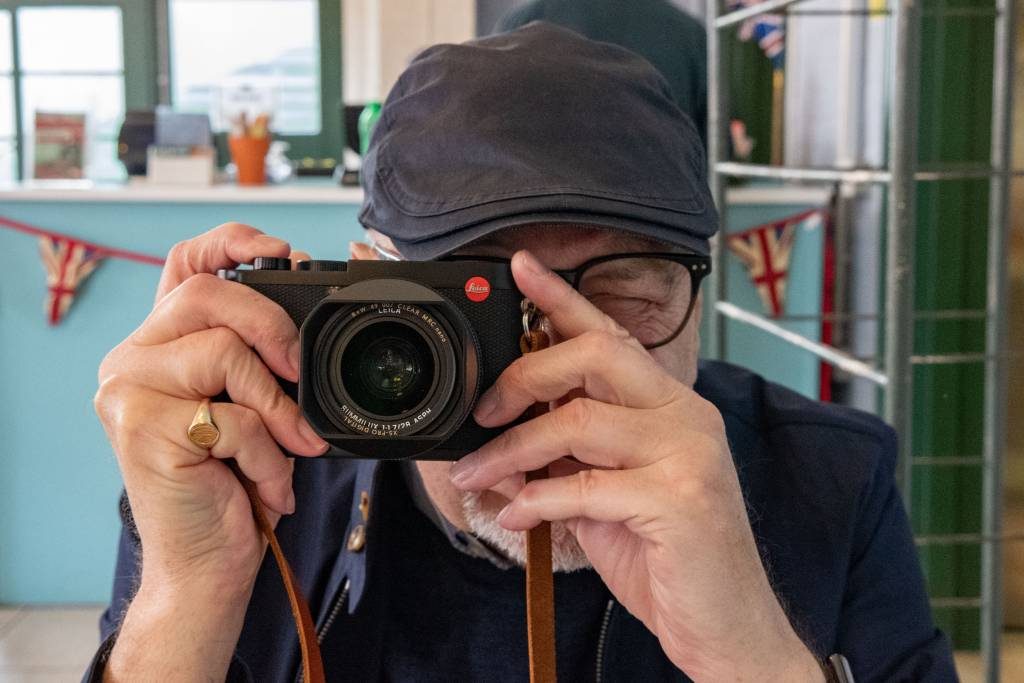

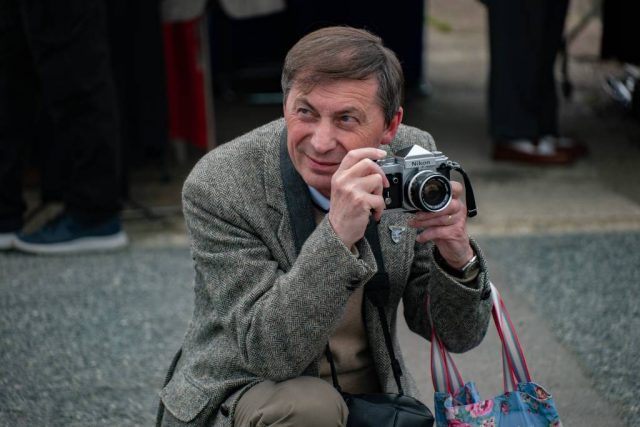




I thought Brooklands was about cars!
Cameras are creeping in!
Nice cameras. The Nikon F2 is one of the best mechanical SLRs ever made and still very relevant for use. I guess if the idea is a vintage accessory, one would want a period lens for the Leica M3, but I have always thought one of the great advantages of the Leica M (and Nikon F) is that you can take the old mechanical cameras and put on a modern mechanical lens and put in modern film and have modern pictures with the same working experience — or vintage mechanical lens for a different rendering on modern film.
Nice article, but you are starting to sell those old snake skin shoes – to the effect I think we need to see photographic evidence of their existence. Although no doubt the paper archive at Macfilos will produce the paper receipt from the 70’s.
Well, whaddya know: David B. was going to say just the same!
Those were the good old – wobbly – days. And if you held the 8mm camera upside down and shot a diver jump into a pool, when processed and returned to you the diver broke (..feet first..) UP, out of the surface, and flew backwards up to the diving board ..because 8mm was just 16mm split down the centre, with the two halves glued to each other to make a full-length 8mm film.)
That would depend on which type of 8mm film.
Standard 8 was as you say, 16mm halved and Super 8 removed the need for splitting the film during processing as it was 8mm wide and double the length.
Your bit about divers confused me though David.
I certainly remember that if you projected the film backwards, the whole thing would be in reverse. Don’t quite get the idea that if you turn the camera upside down that the same would happen.
Surely everything would just be upside down, rather than backwards?
If you visiting Brooklands as a northern gent Michael, may I suggest a few whippets to go with your flat cap next year.
To keep the picture the right way up (..instead of appearing upside down, although shot upside down..) the people at the processing lab – when joining together the two halves of processed ‘single’-8 film – would turn the upside-down-half the other way up to keep the sprocket holes on the correct edge. This meant that the previous-upside-down footage was the right way up, but ran backwards.
(This couldn’t be done with the later ‘Super’-8 film, which really was 8mm wide, and so wasn’t slit in half and joined back together again after processing.)
I am not sure that I understand you David.
As I remember it, the film is reversed half way through its exposure, which is as you say, exposing one side at a time. So when the lab turns the film through 180 degrees after splitting, they are spliced in order to line the sprockets up, it effectively makes the content of the whole film run through the projector in what looks like the same direction?
Turning the film also had the effect of re-spooling the film onto the Ilford/Kodak (or whatever) provided spool so that it could be sent to the lab.
I remember as a youth making a couple of two minute films of my dad driving somewhere. Wedge the camera against the dashboard, and take a shot every second, using the single shot mode.
Fifty years later they look like Laurel and Hardy did back then.
When I’ve a minute, I’ll draw you a diagram – but it’ll take longer to post the drawing online than to draw it ..or to describe it..
Imagine it like this: 1st part of reel (1st half of the film before it’s turned over to shoot down the other edge): action runs normally, from top of screen to bottom.
2nd half (..after film’s been turned over halfway thro’ and re-laced into camera..) is shot upside down, i.e; sprocket holes effectively appearing to be on the WRONG edge of the film after it’s been developed.
Lab develops film and splits it lengthways. Action in 2nd half appears upside down, so lab staff turn 2nd-half of film lengthwise, top-to-bottom.
2nd half of film is joined to end of 1st half: sprocket holes line up; appearance is normal (people, trees, are the right way up), except that the action – as the film is effectively upside-down – runs backwards, from BOTTOM of screen (diver in water) to top (diver emerges from water, glides back upwards to the top of the screen to end up standing on the diving board).
[If that still doesn’t make sense, I’ll post some drawings online ..later.]
Picture 5, gent on right has a Paillard Bolex 8mm cine camera with matching handgrip. It looks like a triple-lens turret version with at least two lenses fitted. Possibly 3 lenses.